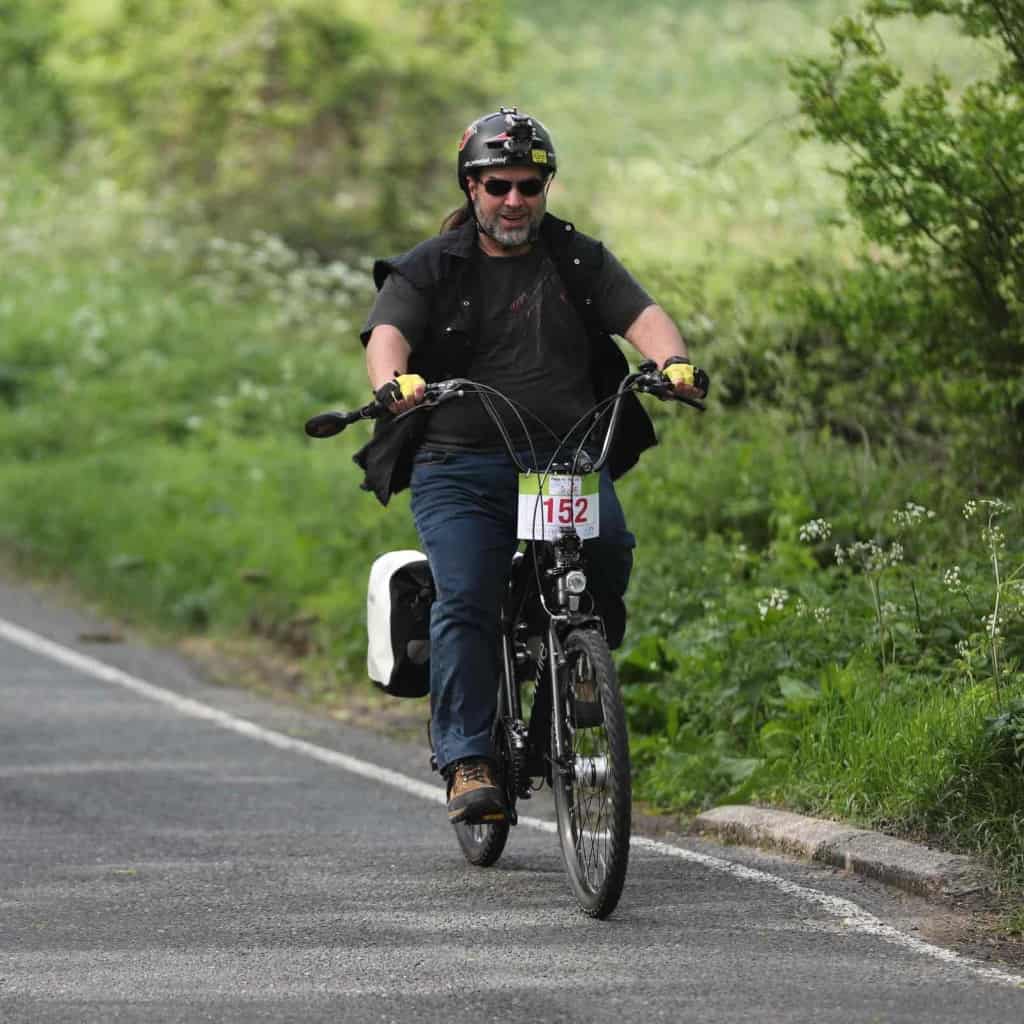Our cycle infrastructure isn’t the best, but don’t let that put you off.
I started cycling as a child, aged 7 or 8, when a mate of mine let me have a go on his bike and I fell off! But I was hooked, so my parents bought me a second-hand unknown brand of bike and painted it with red gloss paint. We had no idea how to maintain it, so it didn’t last long. I remember using Sellotape to fix punctures. It lasted for maybe a year or so, then I didn’t cycle again until my teens when I got a nice Harrier BMX by working weekends in my Dad’s shop. I can remember cycling from Farnborough to Windsor on it once, through Windsor Great Park – that was fun and I’d like to do it again. Eventually I switched to a Raleigh Maverick, one of the first factory-made mountain bikes. I loved it (but still kept the BMX). I used a mountain bike to commute to college before I started getting into motorbikes. As I got into my 20s my leg got bad and I had to give up cycling for crutches – then sticks – but continued to ride motorbikes.

Photo by The J’s Hospice #Pedal4theJs
It wasn’t until 20 years later that I got into cycling again, when after a major leg operation the physio recommended that I start cycling to help overcome my disability – and so I did and discovered why I like cycling again. For a while the cycling helped to strengthen my legs as it is a low impact exercise and it eventually got me off my sticks. Although my disability is degrading, I find cycling is still possible even when I find walking hard and need to use my stick, so I’ve adjusted the sort of bike I ride for my disability.
As a returnee to cycling and someone who is still disabled, I now help to promote cycling to those with disabilities. By reading various tweets, posts and articles, I came across numerous groups helping those with disabilities to realise that they too can cycle. One of those groups was Wheels for Wellbeing. I’ve been a supporter of their schemes to promote cycling for disabled people and for more inclusive cycle infrastructure, which will benefit those who walk or cycle, whether disabled or not.
One of the reasons I support Wheels for Wellbeing is due to the poor quality of cycle infrastructure and the fact that if it is difficult to cycle for a non-disabled person, then it is going to be near impossible for someone with a disability. Cycling on poor quality infrastructure is hard going at times, and even more so when having to mix with drivers who have little patience for those on two wheels. If we had quality cycle infrastructure like they have in places like the Netherlands, this would enable active travel for all and especially for disabled people – whether they are cycling, using a wheelchair or mobility scooter.
Despite the fact that we have poor quality infrastructure for cycling, I still find it beneficial for my health and disability, for if it wasn’t for cycling I would likely be back on my stick or worse. So if anyone thinks cycling is not for them due to their disability, I say give it a go!
Wolf’s story produced by the English Federation of Disability Sport.
